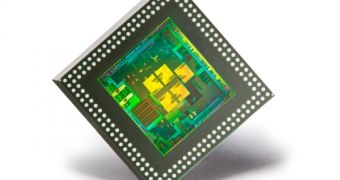It appears that even the latest low-power CPUs and APUs released by Intel and Advanced Micro Devices haven't won the hearts of notebook makers.
There are things afoot on the mobile consumer electronics market, things that don't paint a promising picture for AMD and Intel.
According to Digitimes, neither company's low-power chips can truly be considered worthy opponents to ARM-based platforms, according to notebook makers.
That is not to say that companies are going to suddenly start making laptops powered by ARM chips while skipping over Intel's CPUs and AMD's APUs.
Notebook makers make tablets as well, some of them even smartphones, and ARM offers simply win due to similar, if not better, performance while costing and consuming less.
Intel has the Medfield processors out, based on the 32nm manufacturing process technology. The power consumption is 11W.
The chip giant also has Medfields with lower power draw in the works, intended for phones and slates. They will debut in the second half of this year (2012).
Subsequent product lines will be designed on the 32nm Saltwell, 22nm Silvermont and 14nm Airmont architectures.
Meanwhile, AMD is getting ready to unleash the Hondo accelerated processing unit (APU) for tablets, which will eat less than 5W. The unveiling is going to take place at Computex 2012. After that, a 2W APU of the 28nm variety will appear in 2013, called Temash.
All these processors are superior to those that came before them, but they are not quite up to snuff when compared to ARM's chips.
The ARM architecture still has a clear advantage in affordability and power consumption, so Intel and AMD probably won't score many design wins in tablets and phones this year.
The real battle will start when Windows 8, which supports both x86 and ARM is released to the public. The x86 CPU makers will have suitably energy-efficient chips by 2013, hence equal chances.

 14 DAY TRIAL //
14 DAY TRIAL //